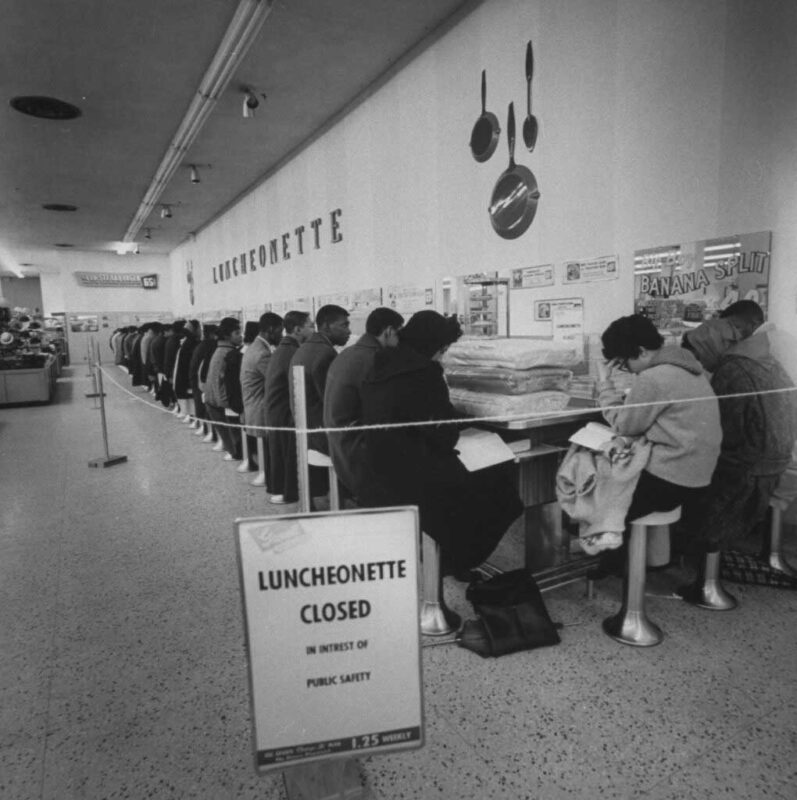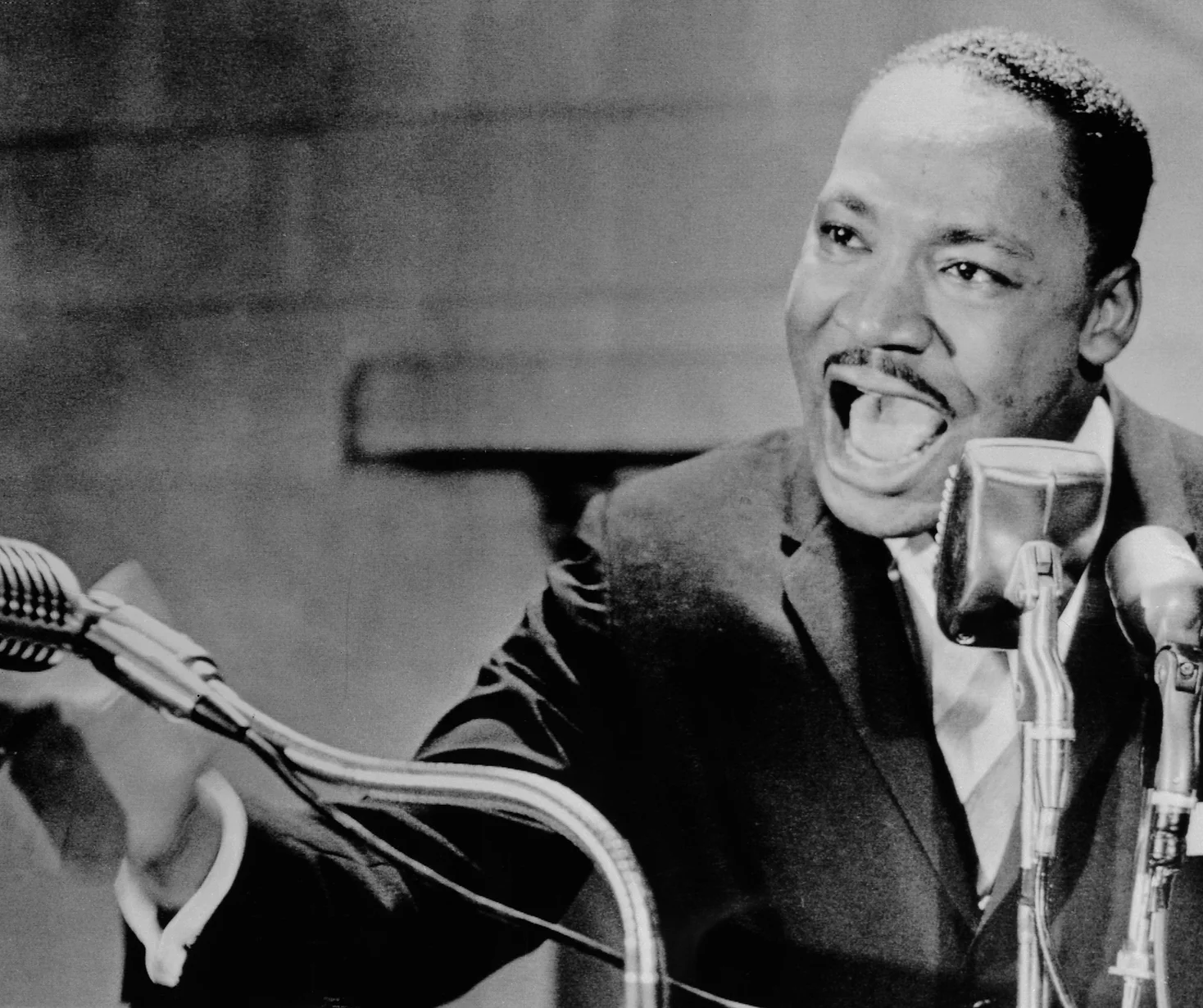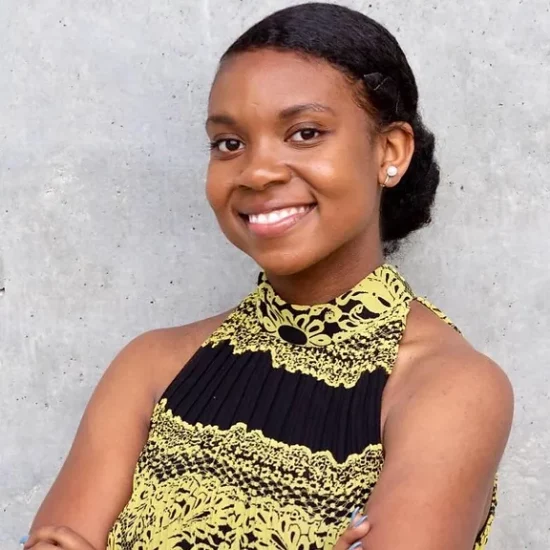Photo by Bettmann Collection/Getty Images
On Wednesday, May 4, 1964, Dr. Martin Luther King Jr. gave an impassioned address at Fisk University, a Historically Black University, regarding the ongoing and intense nonviolent student movement to desegregate downtown lunch counters in Nashville. It was his second appearance at Fisk to support the Nashville Student Movement, a coalition of students from Fisk, Tennessee A&I (now Tennessee State University), American Baptist Theological Seminary (American Baptist College), Meharry Medical College, and Vanderbilt University.
King’s speech was preceded by a sizeable “sip-in” staged at Morrison’s Cafeteria on West End Avenue, where 70 Black students picketed outside the establishment and 200 whites ordered cups of coffee inside and made protests at the cashier’s counter when they left. Shortly after the demonstration ended, a rally began on campus, where King addressed over 2,000 attendees.
The Nashville Student Movement was a critical moment in the Civil Rights Movement. Since 1960, students had been learning and engaging in nonviolent direct-action techniques—like those seen in the photo below. They were taught by Rev. James Lawson, whom King referred to as “the leading theorist and strategist of nonviolence in the world.” Fisk students became frontrunners in the student movement, challenging segregation and building the foundation of the freedom struggle in the South.

Photo by Lynn Pelham/Getty Images
King’s address added to the public pressure that helped usher in the Civil Rights Act of 1964. Introduced by the Rev. D. L. Williams Jr. of Gordon Memorial Methodist Church, King encouraged attendees to “keep moving in Nashville.” His speech boosted the momentum of the Nashville Student Movement, intensifying the struggle for equal rights.
King critiqued the attempts by conservative U.S. Senate members to block the civil rights bill pending before the Senate. “There are 19 men committed to talking, talking, talking until the bill is so watered down it has no meaning,” he said.
He compared the unproductive Senate discussions to the “stall-in” at the 1964 World’s Fair in New York City, which was an effort by certain civil rights activists to bring attention to their long-ignored demands for racial justice. King believed the “stall-in,” in which drivers would block the way to the World’s Fair with their cars, was a tactical error. “The New York stall-in,” he asserted, “would have simply blocked the traffic of history and endangered the lives of 20 million Negroes in America.”
King praised the efforts for civil rights in Nashville, calling the sit-in demonstrations “an epic known all over the nation.” He told the crowd, “You have moved in a uniquely moving orbit of creative protest. Nashville, the Athens of the South, must make a stride into freedom.”

King is captured in this photograph wide-mouthed with his hand extended to support the power of each thoughtful point offered to the audience. He was invited because of his charismatic style, powerful oratory, and engaging personality. King demanded, “Now is the time to make Nashville an open city.”
An NAACP prayer pilgrimage followed the address, and demonstrators marched from the Fisk Memorial Chapel to the county courthouse in support of a public accommodations bill for the city of Nashville. In support of the demonstrations, King remained adamant that “[n]onviolence is the most powerful weapon available to oppressed people.”
Many courageous and vibrant students like Diane Nash, Bernard Lafayette, James Bevel, and John Lewis became known as civil rights icons through their work in the Nashville student movement that originated on the grounds of Fisk University. Their efforts led Nashville to become one of the first southern cities to desegregate its public facilities.
On a national and international scale, Fisk University is known for three things: as the home of world-renowned Jubilee Singers, the alma mater of the great sociologist W. E. B. Du Bois, and a bedrock of the Civil Rights Movement. Fisk offered the space to build, plan, and create a campaign to undertake a nonviolent movement. King’s address stands as a testament to the essence of Fisk University as a site for radical change and the development of so many revered freedom fighters.

Learn more:
Arntz, S. (n.d.). “not a man who talks, but a man who acts.” Nashville Public Library. https://library.nashville.org/blog/2018/04/not-man-who-talks-man-who-acts
Henry, Gerald & Hemphill, John. “200 Whites Stage Sip-in At Morrison’s,” The Tennessean. 4 May 1964
Tennessean, T. (2017, March 2). Nashville then: 1964 Civil Rights Movement in Nashville. The Tennessean. https://www.tennessean.com/picture-gallery/news/2014/02/25/nashville-then-1964-civil-rights-movement-in-nashville/5808857/
Lewis, John, and Michael D’Orso. 1998. Walking with the wind: a memoir of the movement.
Nashville Student Movement. SNCC Digital Gateway. (2021, September 24). https://snccdigital.org/inside-sncc/establishing-sncc/campus-affiliates/nashville-student-movement/
Vivian, C. T., Steve Fiffer, and Andrew Young. 2021. It’s in the action: memories of a nonviolent warrior.





